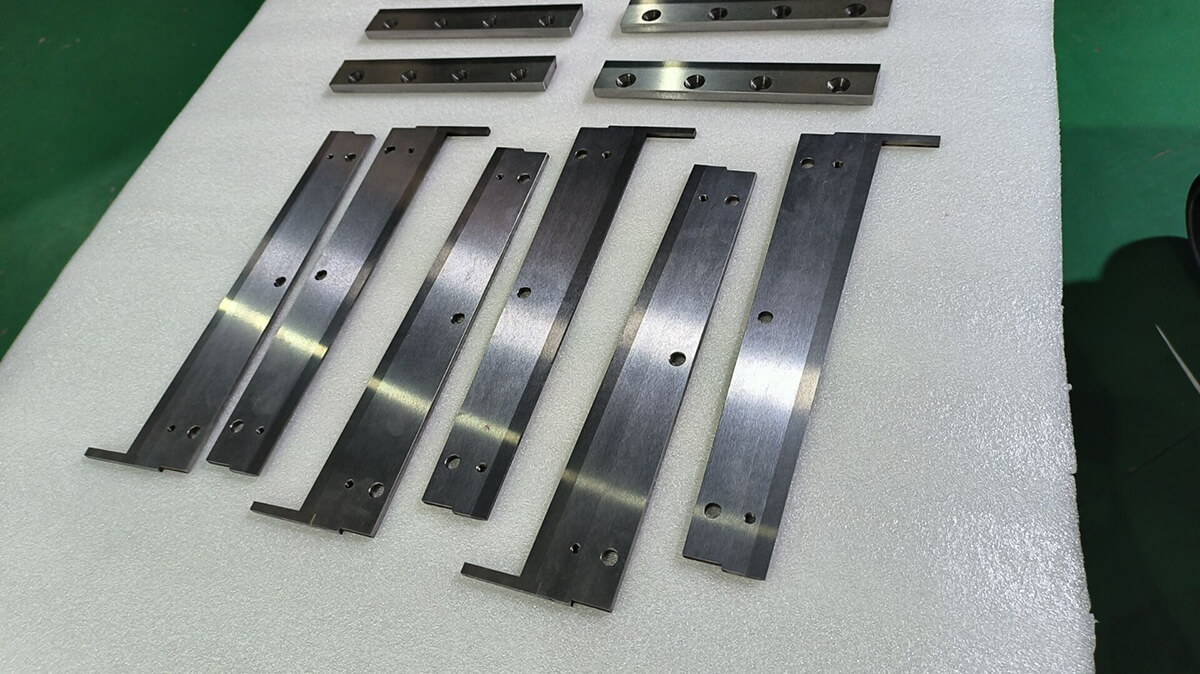Blog: Innovations & Insights

March 2025
Top Uses of Carbide Knives and Recycling Blades in Modern Industry
Introduction
When raw materials meet the production line, it’s the cutting edge that transforms potential into product. Behind every clean cut, perfect pellet, and precisely sized part stands an unsung hero: the industrial blade. Today’s manufacturing leaders aren’t just choosing any cutting solution—they’re specifically demanding carbide knives and specialized recycling blades that deliver where traditional options fall short.
Why Carbide Has Changed the Game
Walk into any high-performance manufacturing facility and you’ll likely find tungsten carbide blades at work. These aren’t your standard cutting tools. The difference? Carbide knives hold their edge up to 30 times longer than high-carbon steel alternatives. When production managers at a major recycling operation switched to carbide, they reported blade changes dropping from weekly to quarterly—a game-changer for maintenance schedules and operational costs.
“We were constantly fighting downtime with our standard blades,” explains one operations manager. “Since implementing tungsten carbide, we’ve cut maintenance costs by 40% while increasing throughput.”
Recycling’s Toughest Challenge
The recycling industry punishes blades like no other. Contaminated waste streams contain everything from hardened metals to abrasive glass, creating cutting conditions that destroy standard blades within hours. Recycling blades made from carbide have transformed these operations, standing up to the punishment while maintaining precise cuts.
One facility processing 200 tons of mixed plastic daily found their conventional blades needed replacement every 36 hours. After switching to specialized carbide recycling blades, they extended replacement intervals to 25 days while improving the quality of their recovered material.
The Maag Rotor Revolution
When precision pelletizing meets carbide technology, the Maag Rotor system demonstrates the perfect marriage of design and materials. This innovative cutting system leverages the inherent advantages of tungsten carbide blades to achieve unprecedented pellet consistency.
Beyond Plastics: Metal Fabrication Breakthroughs
In metal processing, where every cut must be perfect and production schedules demand reliability, carbide knives have become essential rather than optional. The aerospace parts manufacturer who once struggled with inconsistent cuts now produces components with tolerances measured in microns rather than millimeters.
Tungsten carbide blades maintain their geometric precision even after thousands of cuts, ensuring the first part and the ten-thousandth part meet identical specifications. This consistency has opened new possibilities for automation and quality control that weren’t feasible with conventional cutting tools.
Wood Processing: Precision Meets Nature
The natural variation in wood products once meant accepting inconsistent cuts as inevitable. Today’s carbide knives cut through those limitations—literally. From hardwoods to composites, tungsten carbide blades maintain their edge regardless of material density or composition.
A furniture manufacturer reduced material waste by 15% after switching to carbide, noting: “The clean cuts mean less sanding, less finishing, and ultimately, more usable product from every board foot. The carbide knives paid for themselves within three months.”
The Food Industry’s Cutting Solution
When food safety standards meet production demands, carbide knives deliver the perfect balance of performance and compliance. These specialized cutting tools maintain their edge without the micro-fractures that harbor bacteria, making them ideal for meat processing, bakery operations, and prepared foods.
“We used to sharpen blades twice per shift,” explains a meat processing supervisor. “With tungsten carbide, we’re changing blades once a week while improving cut quality and reducing product waste.”
Cutting Through the Noise: Making the Right Choice
With numerous suppliers claiming superiority, how do manufacturing leaders choose the right carbide knives and recycling blades? The answer lies in understanding application-specific requirements:
Material temperature, abrasiveness, and cutting frequency all influence optimal blade selection. Leading manufacturers work directly with customers to analyze these factors, often conducting field tests before recommending specific carbide formulations and blade geometries.
Looking Forward
As factories keep getting better at making things, carbide knives and recycling blades will stay at the forefront of new ideas. Companies that put money into these tools now aren’t just making their current work better—they’re getting ready to meet tomorrow’s tough standards.
When the line between making money and losing it can depend on how well things run, the simple cutting blade deserves more credit than it gets. Good carbide knives don’t just slice materials—they trim expenses, cut down on waste, and give businesses an edge that spreads through the whole making process.
